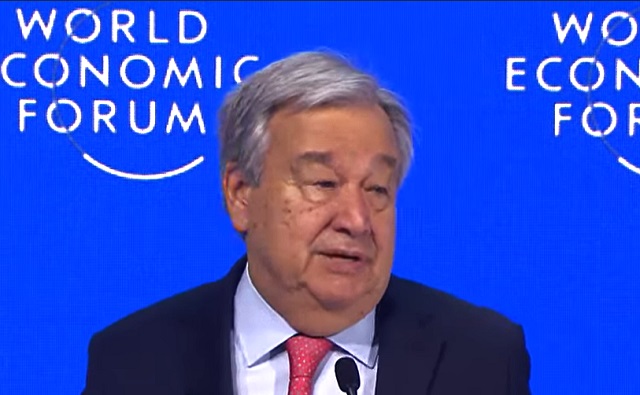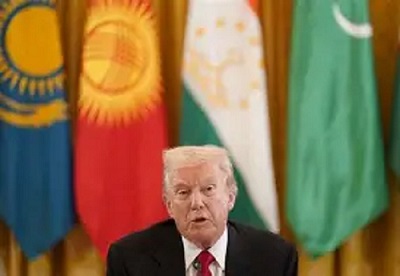conflict
US and UK authorize missile strikes into Russia, but are we really in danger of World War III?

From LifeSiteNews
By Frank Wright
Hopefully a world war appears unlikely, but the decision to allow Ukraine to shoot U.S. and U.K.-provided missiles into Russia once again reveals the lengths to which the ‘neocon globalists’ will go to throw a lifeline to their failing business model.
News that the lame duck President Joe Biden has authorized long-range strikes into Russia using NATO systems was announced with the alarming warning that he had “started World War III.”
The following day, U.S.-supplied and operated ATACMS missiles were fired into Russia.
Russian Foreign Minister Sergei Lavrov described the authorized strikes as an “escalation” showing that the West wants war.
“The fact that ATACMS were used repeatedly in the Bryansk region overnight is, of course, a signal that they want escalation,” he said, according to Reuters.
Lavrov continued: “Without the Americans, it is impossible to use these high-tech missiles, as Putin has repeatedly said.”
Why would the U.S. president finally give the green light to use NATO systems to attack Russia? German Chancellor Olaf Scholz has refused to follow suit and supply German-made Taurus cruise missiles to Ukraine – because he does not want to see Germany drawn into a direct war with Russia.
British Prime Minister Keir Starmer responded by suggesting it is only a matter of time before U.K.-supplied Storm Shadow cruise missiles strike deep into Russian territory.
Today – Wednesday, November 20 – the Guardian reported that it has already happened.
The U.K. government has been behind a long campaign to escalate the war in Ukraine, a move seen as an attempt to secure continued U.S. commitments in Europe. The Trump camp has long signaled its desire to draw down its security provision to leave a “dormant NATO.”
In an indication of the dangers of the U.K.-backed move by Biden, Russian President Vladimir Putin announced an alarming amendment of the Russian nuclear doctrine.
The policy change, announced in September and published following Biden’s announcement, says “an attack from a non-nuclear state, if backed by a nuclear power, will be treated as a joint assault on Russia,” according to the BBC.
Russian nuclear doctrine has long included the use of low-yield “tactical” nuclear weapons in “conventional” warfare – a significantly lower threshold than that of NATO.
While Russian officials urged Western leaders to consult the text, Foreign Minister Lavrov stressed that “we strongly are in favor of doing everything to not allow nuclear war to happen.”
As Reuters reported, this latest provocation is “unlikely to be a gamechanger.” Western media outlets have moved from a narrative of Ukrainian victory to mulling how or even if the state of Ukraine can survive its “inevitable” defeat.
Yet it is not only Ukraine which faces an uncertain future with a Russian victory. The entire globalist order faces a significant blow should the war conclude. Statements from figures such as George Soros, U.S. General Mark Milley, E.U. chief Ursula von der Leyen, and the former head of NATO stressed that their liberal-globalist regime is threatened by defeat in Ukraine.
Biden’s decision has been seen as an attempt to frustrate Donald Trump’s declared agenda – to clear out the “deep state globalists” whose “neocons seeking confrontation … such as Victoria Nuland” have led the U.S. into endless wars since that in Iraq.
An escalation to all-out war with Russia would not only be a disastrous precursor to nuclear escalation, but would also preserve the dominance of the same “neocon globalists” whose “forever wars” Trump has pledged to end.
Arch-neocon Robert Kagan said Americans who support ending wars are “intolerant.” He went on to author two articles which Hitlerized Trump and appeared to incite the assassination of a man who promised in his 2024 victory speech, “I’m not going to start wars. I’m going to stop wars.”
This follows a long series of claims in the same vein.
“I will end the war in Ukraine,” Trump declared in February 2023, saying he would also end “the chaos in the Middle East” and “stop World War III.”
This move by Biden has no military significance in improving Ukraine’s chances of victory. Russia claimed to have shot down seven of eight ATACMS fired into its Bryansk region. Yet prolonging or even escalating this war has enormous political significance.
Since the publication of the RAND Corporation’s 2019 paper “Overextending and Unbalancing Russia,” a strategy of bleeding Russia on the battlefield to collapse its government has been clear. Russia’s near-limitless mineral wealth would provide an obvious boon to a Western system self-sabotaged by sanctions and the destruction of the Nordstream gas supply.
The enormous significance of the war is found in its use as an attempt to extend and consolidate the power of the same system of neocon “globalism” which Trump has vowed to end.
This context explains why the U.K. government has consistently pressed for escalation since the 2022 intervention of then-Prime Minister Boris Johnson seems to have sabotaged peace in favor of an all-or-nothing gamble towards “regime change” in Russia.
Since then, the U.K. government has urged the authorization of long-range strikes into Russia, and it has supplied cruise missiles to attack Russian over-the-horizon nuclear radar warning systems, which play no role in the Ukraine war.
Reports have confirmed “terrorist operations” in Russia, including attacks on the Kerch Bridge leading to Crimea were U.K.-led. A recent expose by The Grayzone revealed that the British state appears to be training Ukrainians to fight a guerilla war, extending hostilities even beyond any ceasefire.
Ukraine’s recent and failed offensive into Russia’s Kursk region appears to have also been a British operation – to secure the kind of “morale boost” which Alastair Crooke says is the only significant war-fighting contribution of the authorization of “wonder weapons” like ATACMS.
The ATACMS authorization was heralded as a turning point in the war by Foreign Affairs. Yet the suspicion of Responsible Statecraft that it was a “sideshow that may become a tragedy” appears to have been confirmed.
The grim reality of this war is underscored by the fact that measures taken which will result in even more needless loss of human life are done so to legitimize useful propaganda headlines. This is undertaken to sell a war which has long been predicted to end as it now seems certain to do so: with a victory on Russian terms.
Though it appears unlikely that a world war will result from this latest reckless move, what has been demonstrated once more is the lengths to which the “neocon globalists” will go to throw a lifeline to their failing business model.
That lifeline is perpetual war, and when they end – so do the careers of so many whose livelihoods and reputations depend on keeping them going.
Artificial Intelligence
AI Drone ‘Swarms’ Unleashed On Ukraine Battlefields, Marking New Era Of Warfare


From the Daily Caller News Foundation
Artificial intelligence-powered drones are making their first appearances on the battlefield in the Russia-Ukraine war as warfare creeps closer to full automation.
In bombardments on Russian targets in the past year, Ukrainian drones acting in concert were able to independently determine where to strike without human input.
It’s the first battlefield use of AI “swarm” technology in a real-world environment, a senior Ukrainian official and Swarmer, the company who makes the software, told the Wall Street Journal in a Tuesday report. While drones have increasingly defined modern battlefields, swarms until now had been confined to testing rather than combat.
“You set the target and the drones do the rest,” Swarmer Chief Executive Serhii Kupriienko told the WSJ. “They work together, they adapt.”
So far, the Swarmer technology has been used hundreds of times to target Russia assets, but was first used a year ago to lay mines on the front, the Ukrainian official told the WSJ. The software has been tested with up to 25 drones at once, but is usually utilized with only three.
Kupriienko told the WSJ that he was preparing to test up to 100 drones at once with the linking software.
A common arrangement used on the battlefield includes one reconnaissance drone to scout out the target and two explosive drones delivering the payload on target, the official told the WSJ.
While Western nations such as the U.S., France and the United Kingdom are also pursuing drone swarm technology, they have not deployed swarm technology on the battlefield the way Ukraine has, according to the WSJ. Currently, autonomous weapons are not regulated by any international authority or binding agreement, but ethical concerns around the technology has led many to call for increased regulation of weapons like the Swarmer system.
The Ukrainian Ministry of Foreign Affairs did not immediately respond to the Daily Caller News Foundation’s request for comment.
conflict
Trump Pentagon Reportedly Blocking Ukraine From Firing Western Missiles Deep Into Russia


From the Daily Caller News Foundation
The Department of Defense has spent months blocking the Ukrainian military from using American and British-made missiles to hit targets deep inside Russia, The Wall Street Journal reported Sunday, citing unnamed U.S. officials.
Undersecretary of Defense for Policy Eldridge Colby reportedly designed the procedure to review requests to carry out the long-range strikes with weapons that are either of U.S. origin or that require American intelligence or use components provided by the U.S., according to the WSJ. Secretary of Defense Pete Hegseth reportedly has the final say on whether Ukrainian forces can use the MGM-140 ATACMS (Army Tactical Missile System) to hit targets in Russia.
The reported blocks on missile strikes coincides with a Trump administration effort to broker a peace deal between Russia and Ukraine. A Pentagon spokesperson declined to comment further on the matter.
BREAKING: President Vladimir Putin reacts to B-2 Flyover pic.twitter.com/1mzVn7DxlW
— Jack Poso 🇺🇸 (@JackPosobiec) August 15, 2025
The Biden administration allowed Ukraine to carry out strikes with ATACMS in November, weeks after President Donald Trump won the 2024 election, the New York Times reported. Trump criticized the move during a December interview with Time magazine.
“It’s crazy what’s taking place. It’s crazy,” Trump said. “I disagree very vehemently with sending missiles hundreds of miles into Russia. Why are we doing that? We’re just escalating this war and making it worse. That should not have been allowed to be done.”
Trump and Russian President Vladimir Putin met in Alaska on Aug. 15 for a summit meeting during which Trump sought to secure a cease-fire in Russia’s war with Ukraine. As Trump greeted Putin, a B-2A Spirit stealth bomber and several fighters carried out a flyover of Elmendorf Air Force Base.
Trump met with Ukrainian President Volodymyr Zelensky and major European leaders on Aug. 18 to update them on the summit.
In July, Trump reached an agreement with NATO where members of the alliance would purchase weapons, including MIM-104 Patriot surface-to-air missiles, and donate them to Ukraine.
-

 espionage2 days ago
espionage2 days agoU.S. Charges Three More Chinese Scholars in Wuhan Bio-Smuggling Case, Citing Pattern of Foreign Exploitation in American Research Labs
-

 Business1 day ago
Business1 day agoCarney budget doubles down on Trudeau-era policies
-

 Daily Caller2 days ago
Daily Caller2 days agoUN Chief Rages Against Dying Of Climate Alarm Light
-

 COVID-191 day ago
COVID-191 day agoCrown still working to put Lich and Barber in jail
-

 Business1 day ago
Business1 day agoCarney’s Deficit Numbers Deserve Scrutiny After Trudeau’s Forecasting Failures
-

 International1 day ago
International1 day agoKazakhstan joins Abraham Accords, Trump says more nations lining up for peace
-

 Business1 day ago
Business1 day agoCarney budget continues misguided ‘Build Canada Homes’ approach
-

 Business2 days ago
Business2 days agoU.S. Supreme Court frosty on Trump’s tariff power as world watches







